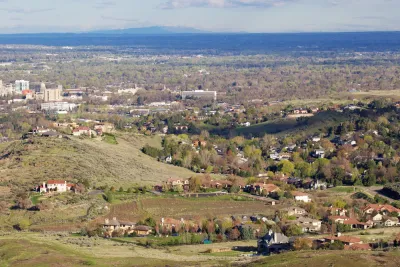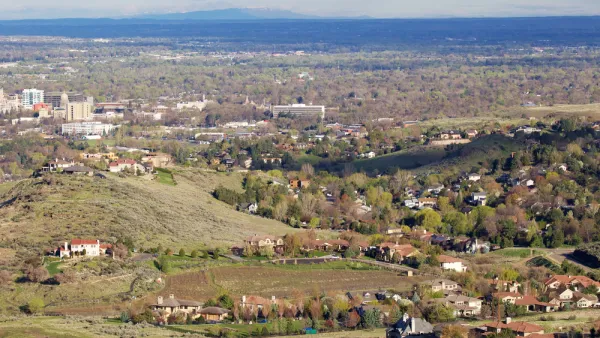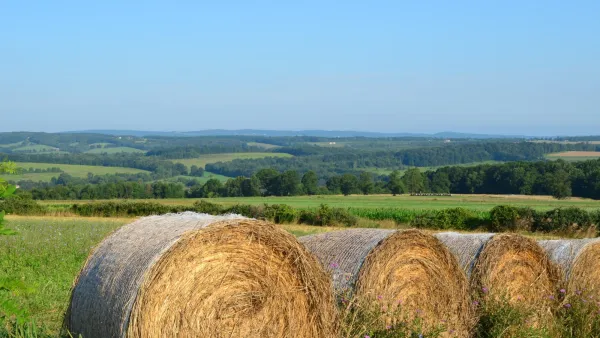Will the arid West’s farms and settlements thrive for another century? Better conservation policy should take a longer view.

Gracy Olmstead writes on the rapid growth in the Mountain West, where suburban development is competing with and water and farms. Boise, for example, sits adjacent to prized farmland known as the Treasure Valley, and the "is the single largest contributor to the state’s economy."
Olmstead considers the pressure on growth happening in just one place, "an exurb of Boise called Meridian that was [in 2017] the fifth-fastest-growing city in the United States." And the larger demographics also put pressure on this region: "among the top 10 states that grew from 2017 to 2018, the Census found that the top four are Western, arid states: Nevada, Utah, Idaho, and Arizona."
Olmstead turns to the long history of settlement in the American West, and focuses on the 19th-century explorer John Wesley Powell: "Perhaps more than any other man of his time, he comprehended the limits of Western geography, and suggested that inhabiting the land would require a far different set of rhythms than those we had cultivated up to that point." Yet U.S. officials of the day went on handing "out land in rectangular 160-acre parcels—and ignored the implications of the west’s aridity."
Today, regional planners may consider public-policy innovations such as Transfer of Development Rights (TDR), and Olmstead suggests Western areas may want to follow this approach, where "a developer can buy a landowner’s development rights and transfer them to a different area." "Argrihoods," such as Serenbe outside of Atlanta, may also save farmland alongside development. Still, Olmstead concludes that "one of the most important challenges for today’s farmers in the West will be decreasing the gap between their land’s agricultural value and its real-estate development value." To find solutions, "Powell suggested another way forward: a more local, regional approach, in which farmers might work together to protect their water rights, desert cities might steward resources more wisely, and Western towns might cultivate cooperation and shared trust."
FULL STORY: The Forgotten Treasure In Western Land

National Parks Layoffs Will Cause Communities to Lose Billions
Thousands of essential park workers were laid off this week, just before the busy spring break season.

Retro-silient?: America’s First “Eco-burb,” The Woodlands Turns 50
A master-planned community north of Houston offers lessons on green infrastructure and resilient design, but falls short of its founder’s lofty affordability and walkability goals.

Delivering for America Plan Will Downgrade Mail Service in at Least 49.5 Percent of Zip Codes
Republican and Democrat lawmakers criticize the plan for its disproportionate negative impact on rural communities.

Test News Post 1
This is a summary

Test News Headline 46
Test for the image on the front page.

Balancing Bombs and Butterflies: How the National Guard Protects a Rare Species
The National Guard at Fort Indiantown Gap uses GIS technology and land management strategies to balance military training with conservation efforts, ensuring the survival of the rare eastern regal fritillary butterfly.
Urban Design for Planners 1: Software Tools
This six-course series explores essential urban design concepts using open source software and equips planners with the tools they need to participate fully in the urban design process.
Planning for Universal Design
Learn the tools for implementing Universal Design in planning regulations.
EMC Planning Group, Inc.
Planetizen
Planetizen
Mpact (formerly Rail~Volution)
Great Falls Development Authority, Inc.
HUDs Office of Policy Development and Research
NYU Wagner Graduate School of Public Service




























